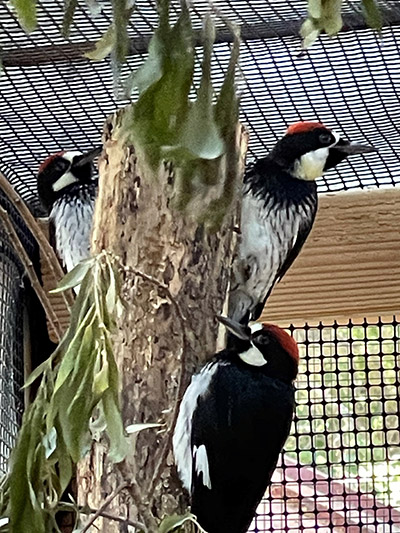How Much Wood Can a Woodpecker Peck?
By Executive Director, Jennifer Brent

Acorn Woodpeckers
Once able to eat on their own, the woodpeckers were placed in an outdoor aviary to acclimate to the temperature, develop muscle stamina and strength, and de-habituate from humans. In a special aviary, logs were hung from the ceiling to mimic trees. These logs have been drilled with multiple holes, where we secrete mealworms and other tasty tidbits. In this way, the birds learn that pecking the wood will bear food.
Woodpeckers have special adaptations that allow them to “drill” into trees. Their tongues wrap around their brain—this cushions their heads while drilling into wood and provides a handy space for their very long (5 inches for an adult Acorn Woodpecker) tongues to go. These tongues are barbed, which enables them to scoop out insects or sap from a hole.
Male and female Acorn Woodpeckers look virtually the same, both sporting the distinctive red “caps” and black backs and white breasts.
These birds depend on oak forests for survival, as they are specialists in acorns. They may create granaries to prepare for winter and store over 50,000 acorns in a single tree, with each acorn in its own small hole. As specialists, Acorn Woodpeckers are particularly vulnerable to deforestation and loss of habitat.
